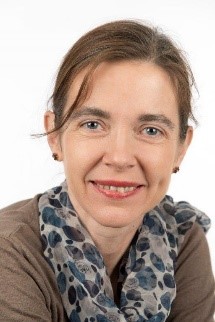Expressing first milk before birth and feeding it to a newborn is called colostrum banking. Dr Vökt from the Women’s Hospital in Grabs, Switzerland, gave us an interview explaining in which cases colostrum banking is indicated and what the benefits are.
Interview with Dr Cora Vökt
What exactly is colostrum banking and how does it work in practice?
Colostrum is a special term for the milk that is produced by the maternal mammary gland during the first days after childbirth and contains all the vital nutrients and immune substances that newborn babies need. Since colostrum is produced already in the second half of pregnancy as part of lactogenesis stage 1, many women can express this first milk from the lactiferious gland by massaging their breast. The prenatal colostrum expression and storing, also referred to as colostrum banking, is a method to obtain milk for your own baby and support breastfeeding in the first 24 hours or possibly in the first days of life.

Dr Cora Vökt
For which patient groups do you recommend colostrum banking?
A prenatal colostrum expression and storing can be considered in all women that are at risk to have a difficult start into breastfeeding. This can be necessary for example if babies have a congenital disease (e.g. a cleft lip and palate) which makes it hard for them to drink sufficiently, or because an effective early nutrition is medically indicated due to an increased risk for hypoglycaemia.
Maternal gestational diabetes is the most common indication for early bottle feeding and blood glucose monitoring amongst normally developed newborns. Most commonly birth clinics will, in compliance to the neonatal recommendations, give formula or maltodextrin in addition to breastfeeding, which can compromise the initiation of breastfeeding or even prevent exclusive breastfeeding later on. Through colostrum banking it is possible in many cases to freeze and store maternal colostrum to give it to the baby directly after birth in addition to normal breastfeeding.
In many instances, prenatally learned breast massage will make colostrum secretion after birth more effective and promote the initiation of breastfeeding.
If newborns are very sleepy and don’t want to be breastfed in their first 1-2 hours of life, it will be easier to express some colostrum and put a few droplets in the mouth of the baby to stimulate breastfeeding. Sometimes it is also possible to express a sufficient amount of fresh colostrum after birth and give it to the baby right away without having to use milk that was expressed and frozen before birth. Fresh colostrum is usually preferred.
What is the benefit of colostrum banking from a medical point of view?
Colostrum banking helps to have an easier start into breastfeeding in general and to ensure exclusive breastfeeding right from day one. In normal-size and mature newborns who are at risk of hypoglycaemia, colostrum banking can help to reduce or even avoid the addition of formula without increasing the risk of hypoglycaemia.
How do hospitals in Switzerland introduce colostrum banking to pregnant women?
At several Swiss hospitals pregnant women with gestational diabetes are informed about the possibility of individual, antenatal colostrum expression to get early milk for their own child. If they’re interested, they will be instructed by trained specialists.
What is your experience with colostrum banking since its introduction at the Grabs Women’s Hospital?
Since early 2018, we are informing pregnant women with dietary or insulin-dependent gestational diabetes about the possibility of prenatal colostrum expression in the late pregnancy. If interested, they get qualified counselling and instructions from one of our lactation consultants. So far we have received a lot of positive feedback from the women. The counselling seems to make the initiation of breastfeeding easier, engorgement often happens earlier and is perceived more pleasant, and less or (in the majority) no formula has to be added (without increasing the risk of hypoglycaemia), all of which is greatly appreciated by the women.
Are there any additional specific rules or recommendations that should be observed in colostrum banking, also in comparison to regular human milk banks?
For individualized colostrum banking, where pregnant women extract their colostrum by breast massage a few weeks prior to the calculated date of birth, a qualified and professional advice from a specialist with adequate training is needed. It is also necessary to obtain a signed consent form from the expecting mothers, and they also need to be instructed in the correct technique of breast massaging and how to ensure an hygienic environment for expression and storage. Of course, prior to using colostrum banking, it has to be ruled out that there are any contraindications for breastfeeding.
Special thanks to
Dr Cora Vökt, International Board Certified Lactation Consultant, Specialist in Gynaecology and Obstetrics with focus on fetomaternal medicine, Senior Consultant at the Women’s Hospital Grabs, Switzerland

